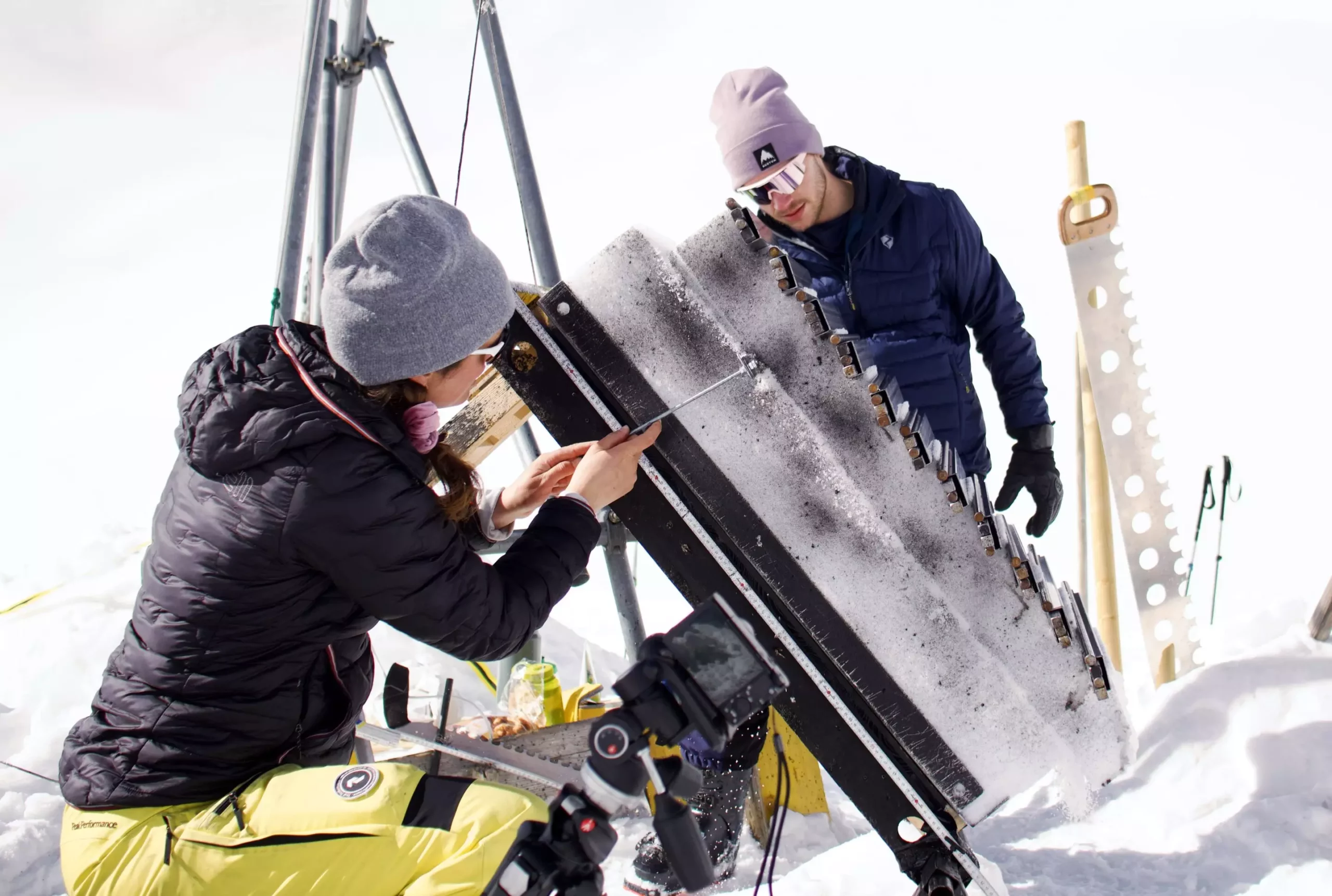Snow safety is a pressing concern for both mountain enthusiasts and scientists alike, particularly due to the unpredictable nature of avalanches. Many are unaware that even slight pressure alterations on snow can generate significant outcomes, such as causing a fragile underlayer to collapse and instigating a slide. This phenomenon, known as “anticracks”, underlines the importance of understanding snow’s fundamental fracture properties, which remain somewhat elusive despite advancements in avalanche research. A groundbreaking study led by Dr.-Ing. Philipp Rosendahl from the Technical University of Darmstadt offers valuable insights into this conundrum with a novel methodology to measure the fracture toughness of these weak layers of snow in natural settings.
The mechanics of how various layers of snow interact—especially under stress—hold key implications for avalanche prediction and prevention. Despite new research, a comprehensive understanding of the fracture mechanics inherent to snow has been difficult to establish. Dr. Rosendahl emphasizes that a clearer grasp of these dynamics is essential for enhancing our predictive capabilities regarding avalanche events. This becomes particularly pressing when considering the fatal consequences of avalanches, which can devastate entire mountain regions and threaten lives.
In their innovative research, Rosendahl and his team sought to address a significant gap in our understanding: how weak, buried layers succumb to pressure and ultimately lead to avalanches. Their approach was marked by two pivotal components: creating controlled anticracks in the field and applying a non-local mechanical model to assess the energy balance involved in the onset of crack growth. This comprehensive methodology paves the way for advancements that could significantly refine avalanche monitoring and forecasting techniques.
The Experimental Setup: A Delicate Balance
The researchers employed a well-designed experimental setup, which is essential when attempting to simulate the complicated dynamics of snow under load. Weakly structured snow blocks were fixed onto a sled, allowing the team to manipulate various angles and forces. Through the use of additional weights and deliberate cuts in the weak layers, they successfully triggered the collapse of the snow column—a moment described as the onset of anticrack propagation. This hands-on methodology facilitated the first significant determinations of fracture toughness in weak snow layers across a spectrum of conditions.
A particularly intriguing finding from this research is the relationship between shear and compressive loads on crack propagation. Contrary to initial expectations, the study determined that resistance to crack progression was significantly higher under conditions more representative of real-world scenarios, where shear forces are prevalent. This unexpected result, highlighting a complex interaction between different types of loads, enhances our understanding of avalanches’ mechanics. Furthermore, the research offers broad implications that extend beyond snow science; similar behaviors can be found in other porous materials such as metals and rocks.
The implications of this research extend well beyond avalanche forecasting and safety. Understanding how porous materials like snow behave under varying stresses could aid advancements in numerous fields, including engineering, architecture, and aerospace. In industries where lightweight yet resilient structures are critical, insights derived from snow mechanics could be transformative.
By exploring the mechanics of crack propagation within various materials, scientists can develop new models that allow for the design of safer and more efficient infrastructures. Moreover, the research lays the groundwork for further explorations into how materials respond under complex loading conditions; this could lead to innovations across several disciplines.
The necessity of understanding the mechanics underlying snow avalanches cannot be overstated. As Dr. Rosendahl and his colleagues have illustrated, even the subtlest shifts in pressure can precipitate tremendous consequences. Their innovative methods provide essential insights that pave the way for improved predictive measures, increasing both safety and knowledge in avalanche-prone areas. With further research and understanding, we may find ourselves not only better equipped to predict avalanches but also to design structures and materials that can withstand extreme conditions, ultimately harnessing this knowledge for broader scientific and humanitarian benefits. The collaboration between different fields of research stands as a testament to the power of interdisciplinary studies, ultimately enriching our understanding of nature’s complex systems.


Leave a Reply